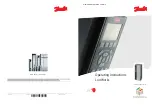
7
battery connections are tight and the battery (or batteries) is (are) fully-charged. If the
connections are good and the battery is charged, but the voltage still drops below 11
volts, you may need to use a larger battery (or battery combination).
CAUTION
Rechargeable Devices
Certain rechargeable devices do not operate well from a modified sine
wave inverter. They only operate properly from a standard household
outlet, which provides a pure sine wave. Therefore, the manufacturer
recommends that these types of devices be operated from a standard
household outlet only, not from the inverter.
This problem does not occur with most battery-operated equipment.
Most of these devices use a separate charger or transformer that is
plugged into an AC receptacle. This inverter is easily capable of
running most chargers and transformers.
OPERATING INSTRUCTIONS
Power Source Requirements
The inverter will operate from input voltages between 11 and 15 volts DC. If the
voltage drops below 10.6 volts, an audible low battery warning alarm will sound.
The inverter will shut down if the input voltage drops below 10.5 volts DC. This built-
in feature protects the battery from being completely discharged.
The inverter will also shut down if the input voltage exceeds 15.5 volts. This
protects the inverter against excessive input voltage. Although the inverter has built-in
protection against over voltage, it may still be damaged if the input voltage exceeds
15.5 volts.
Inductive loads, such as TVs and stereos, require more current to operate than do
resistive loads with the same wattage rating. Induction motors, as well as some TVs,
may require two to six times their rated wattage to start up. Because the MAXX SST
™
inverters have a peak watt power rating, many such appliances and tools may be
safely operated. The equipment that needs the highest starting wattage are pumps and
compressors that start under load. This equipment can be safely tested. If an overload
is detected, the inverters will simply shut down until the overload situation is corrected.
Use the front panel switch to turn OFF the inverter, then ON, to reset the inverter.
CAUTIONS
Exceeding recommended voltage limits will void manufacturer’s
warranty.
NEVER try to use the inverter with any 12 volt DC power source
that uses a POSITIVE ground. (Most vehicles and boats use negative
ground systems.)
The DC power source must be a well-regulated DC power supply as typically found
in vehicle and deep-cycle marine batteries. The DC power source may also be two
12 volt batteries connected in parallel. On larger applications the power source may
be several batteries connected in parallel as shown in the following “Battery Wiring”
diagram.
6
The following chart shows the approximate amperage and corresponding wattage at
120 volts AC for various common tools and appliances.
Appliance Consumption in Amps and Watts Chart
APPLIANCE
AMPS@ WATTS@
120VAC 120VAC
Laptop Computer
0.5
55
Household Power Mixer
2
220
240-Watt Stereo/Amplifier
2.2
242
Refrigerator
3
330
3/8" Variable Speed Drill
3
330
Variable Speed Jig Saw
3
330
10-Speed Blender
3.2
352
Belt Sander
3.4
374
3/8" Reversible Drill
3.5
385
Household Food Processor
3.6
396
Computer and Monitor
4
440
Portable Vacuum
4.6
506
8-Cup Coffee Maker
5.5
605
Electric Trimmer
5.5
605
1/2" Hammer-Drill
5.5
605
Reciprocating Saw
6
660
Vacuum Cleaner
7.2
792
1-1/8" Rotary Hammer
7.8
858
1/6 H.P. Submersible Sump Pump
8
880
Compact Microwave Oven
8.5
935
10" Bench Saw
13.0
1500
Note:
Appliance specifications may vary from brand to brand. This table is offered
only as a guide to approximate power ratings. Check appliance manuals or
product labeling for actual ratings. For continuous use at maximum output, the
MAXX SST
™
inverter must be connected to a DC power supply capable of
providing at least 1/10th of the inverter’s continuous wattage rating.
The inverter will operate most AC loads within its power rating. Some induction
motors used in refrigerators, freezers, pumps and other motor-operated equipment,
require very high surge currents to start them. The inverter may not be able to start
some of these motors even though their rated current draw is within specifications for
this power inverter.
If a motor refuses to start, observe the battery voltage using a DC voltmeter while
trying to start the motor. If the battery voltmeter drops below 11 volts while the inverter
is attempting to start the motor, this may be why the motor won’t start. Make sure the
VEC049_thru_56D_Manual_092205 10/21/05 11:50 AM Page 6






































